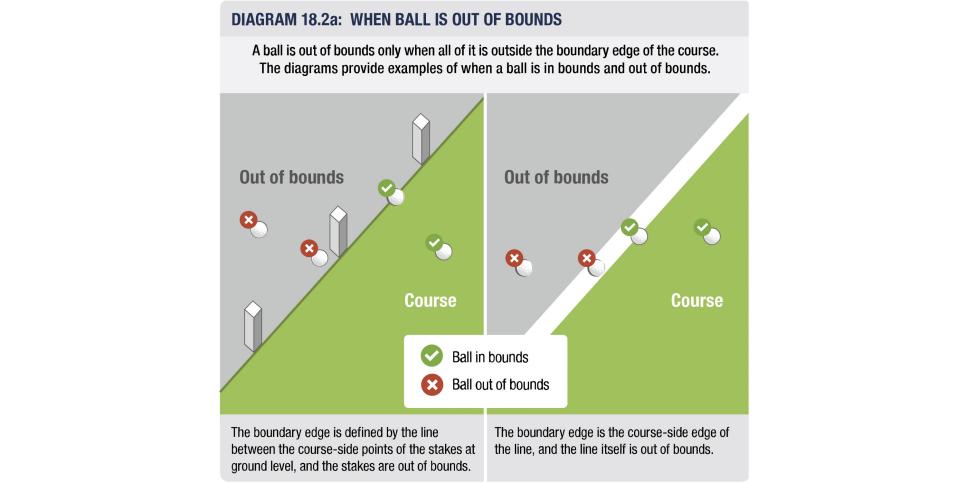Rules
Rules of Golf Review: How do I know if my ball is out of bounds?

J.D. Cuban
You can see it in the distance. This is going to be close, you think. Then, as you approach the ball, things are not looking good. It appears your ball is right on the line that marks out of bounds on this particular hole. You crouch down, positioned appropriately along the line between the two stakes that help you determine if your ball is still in play. Part of it seems to be out of bounds, while part seems in.
So which is it?
If even the tiniest portion of the ball is in play, the ball is NOT out of bounds (Rule 18.2a).
That's the good news. But keep in mind, the Rules of Golf is very specific about how to determine if a ball close to the course's boundaries is in or out. For example, if out of bounds is marked with white stakes, the course-side edge of the stakes is where out of bounds begins. So if your ball was on the outside edge, seemingly disecting the imaginary line, it would be out of bounds. The same is true if OB is marked with white paint. It's the course-side edge of that paint that marks out of bounds. The line itself is out of bounds.

Rules of Golf, ©2019 The United States Golf Association and R&A Rules Limited. Reprinted with the permission of the USGA
You might be thinking, what if your ball is stuck in a bush that lies directly on the boundary? Or what if the stakes defining out of bounds aren't standing straight up? In either case, nothing changes. In the case of the bush, if any part of your ball is on the course side of the OB marker edges, you're OK. And when checking position with a stake that's leaning, you should look at the ground-level, course-side edge of the stake boundary.
Pardon the cliche, but golf really is a game of inches, fractions of an inch, actually. Just ask Kurt Kitayama, who almost lost his chance of victory at the Arnold Palmer Invitational by an unfortunate break at the ninth hole on Sunday.
You might recall, Kitayama's ball ended up just to the left of the cart path off the tee, and anything left of the tee was deemed out of bounds. If the ball was touching the cart path, it would have been considered in bounds and he would likely have gotten free relief from the cart path. He made a bogey 6 but settled himself down and made four birdies on the back nine to claim the title and the $3.6 million first-place prize money payout in the designated event.
And if you're looking for another painful example of how close is the difference between in bounds and out of bounds, check out this instance with J.T. Poston at the 2021 Barbasol Championship. Unfortunately for Poston, he would lose the title in a playoff to Seamus Power.
One more thing about OB markers. Say your ball was up against a fence that defines out of bounds. It's in play, but you really can't make a normal swing at it. It's perfectly within the rules to go to the OB side of the fence and whack the fence where the ball lies to get it rolling back into a decent lie. You can stand out of bounds to play a shot in bounds.


